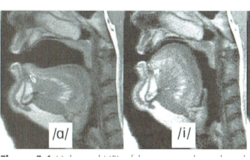RtI Tier 3 for Articulation
January 20, 2018 12:00 amMy definition of Tier 3 intervention is that students work with me but are not enrolled in special education. The purpose is to see if they respond positively to the direct intervention that I provide. If they do, they are not referred for special education services. If they don’t, they are. I have found through the years, that almost all students I see respond positively and never go into the special education system.
Almost all of the information that I have seen given by SLPs involving RtI involves language issues. From my perspective, articulation/phonology should play a primary role in RtI. There are a ton of kids (particularly in kindergarten and preschool) who need help with fronting, s-clusters and the like. At the ASHA Convention, I went to a session that stated that the research shows a strong correlation between reading deficits and articulation/phonology deficits. Thus, they stated how important it is to remediate speech errors as early as possible.
I also realize there are problems inherent with RtI such as high caseloads that leave no time to do it, students moving to another school where the SLP isn’t offering RtI, no billing/payments for services, getting more schools/students added to your caseload because your enrolled caseload is low (due to working with RtI kids), etc.
Currently I’m doing a study with RtI articulation/phonology students. I work 2 days a week (I retired in 2011), have a caseload of about 20 and an additional 11 RtI kids (with 3 already remediated so I’m now working with 8). The older 3rd grade kids are mostly /s/ and /r/ issues and the kindergartners run the gamut from fronting, consonant cluster reduction/deletion to final consonant deletion. They are seen once a week individually for 10-15 minutes and are all making progress (i.e. they are responding to my intervention).
I’m curious to hear your thoughts and what your experience has been with RtI for articulation/phonology (steve@satpac.com).
Stephen Sacks
SATPAC Speech
Upcoming workshops: Phoenix Feb.1 and 2. April 13 in Elk Grove, CA and April 27-28 in So. Cal. Details at https://satpac.com/sacks-workshops/
Because I want SLPs from all over to use and understand my program, I have a .6 CEU ASHA webinar that is basically the same as my live presentations. Go to the SATPAC website for details. Here is the link: https://satpac.com/workshops/webinar
Looking for professional development for your school district or organization? Contact me steve@satpac.com for details.






